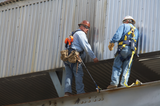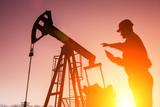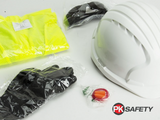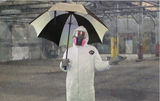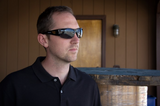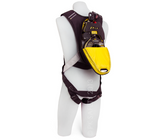Blog
Keeping Your ANSI Z359 SRLs Compliant
ANSI Z359.1 was published in 1992 and approved a scant 15 years later. Slowly grind the wheels of progress. And ANSI Z359 is progress in terms of worker safety, even if it is going to cost more money in the short run. Greater regulation of worker safety almost inevitably means increased administrative work and expense for employers, compliance provides improved safety for workers and increased protection against litigation. Certainly these are both worthy goals, whether you're working in the
…
May 7th 2014
Wireless QRAE 3 Confined Space Gas Detector from RAE Systems
RAE Systems is the manufacturer of the
QRAE 3, the newest multi-gas monitor for confined space entry. Up to four sensors can be configured in this device for combustible gases (LEL), Oxygen (O2), Carbon Monoxide (CO), Sulfur Dioxide (SO2), Hydrogen Sulfide (H2S), or Hydrogen Cyanide (HCN) depending on the specific needs of your facility.
The interesting thing about this monitor is the wireless configuration option. RAE Systems says this device will work in confined spaces as well. Fo
…
Apr 11th 2014
Inspection and Maintenance of Personal Protective Equipment
Personal protective equipment like
hard hats and harnesses aren't made to last forever. So much of this equipment has elastomeric or plastic parts that are particularly susceptible to deterioration over time. Abrasion can weaken stitching, nylon straps can be snagged and torn - even metal pieces corrode. Typically it's recommended by manufacturers that reusable PPE be replaced every 2-5 years even if it hasn't been damaged. But there are ways to extend the life of your PPE.
Safety eq
…
Apr 2nd 2014
Oilfield Safety Equipment: PPE for Oil and Gas Production Workers
With oil production continuing to expand in areas like Midland, Texas and The Bakken, OSHA regulators haven't been far behind. It's not just drillers and chainhands that fall under the protection guidlines, but toolhands and other contractors who need to be fully equipped to deal with the health hazards associated with oil and gas extraction. We're going to take this space to discuss the personal protective equipment (PPE) that takes care of the OSHA requirements.
In addition to those w
…
Mar 24th 2014
A Work Safety Kit with Everything for Your New Employees
For a ready-made, one-click solution to putting personal protective equipment on your employees, check out the
PK Safety PPE Kit. Each kit arrives in a poly bag ready to pass out. Hearing protection, hand protection, eye protection, a hard hat, and a reflective safety vest are all included.
Each piece of this safety kit meets OSHA safety standards. The Evolution 6121 hard hat is made of high-density polyethylene and has raised channels that run across the top. These ridges not only m
…
Mar 6th 2014
Best Mask for Asbestos: What is the Best Asbestos Respirator?
People often ask us about asbestos-rated respirators. Everyone knows airborne asbestos, even in small quantities, is scary stuff. It can be very damaging to the lungs and is known to cause cancer. If you have work where you suspect or know for sure asbestos is present, you need to be extremely vigilant about using the proper safety equipment and making sure it is working perfectly.
Because of the serious nature of asbestos removal, OSHA and other work safety standard agencies have exten
…
Aug 29th 2013
The Three Most Important Mold Cleanup Safety Precautions
Mold doesn't need much to get started. Supplied with a little moisture and some warmth it's very hard to completely eradicate once it gets started. In situations where there are large areas of mold, or when flooding or plumbing problems have occurred, it's important to follow recommended safety procedures while completing your work.
There are a few basic precautions everyone working in moldy areas should follow. First, avoid breathing in mold or mold spores. Undisturbed, mold isn't like
…
Aug 7th 2013
Less is More with the Miller AirCore Harness
Working at height can be challenging enough without having safety equipment that binds and weighs you down. Many of our customers climb regularly, and the feedback we are getting about the
Miller AirCore Full-Body Harnesses is positive across the board.
There are a range of requirements for harnesses meeting OSHA and ANSI fall safety standards. With the AirCore, Miller has managed to meet these standards using 16% less material overall. The results are greater mobility, reduced weigh
…
Jul 29th 2013
Why Your Employees Don't Wear Their Safety Glasses
We all know the best type of safety gear is the kind workers want to wear. There are piles of brightly colored vests and harnesses and hard plastic safety glasses in shops across America that don't fit comfortably and doesn't get used. They pinch, or they bind, or just look ridiculous. Certainly that has been the case with safety eyewear over the years. Some of the old safety eye protection are both ugly and uncomfortable. Which makes the new line of
Carhartt safety eyewear made by Pyramex
…
Jun 18th 2013
Latchways offers Self-Rescue for Fallen At-Height Workers
At height workers, whether they are working solo or as part of a team, must be supplied not only with proper fall protection, but also a plan for rescue. If you or a co-worker fall and aren't able to conveniently self-rescue, what is your plan?
Typically workers wearing
self-retracting lifelines (SRLs) are generally stopped quicker and closer to the spot they fell from than workers wearing traditional shock-absorbing lanyards. The second group, when they fall, often are stopped relat
…
Apr 15th 2013


